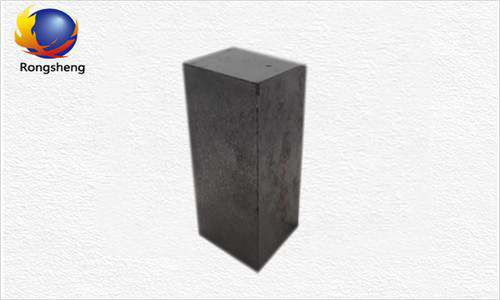1. Carbon brick
Carbon brick is a high temperature resistant neutral refractory product made of carbonaceous materials as raw materials and added with an appropriate amount of binder. Carbon Brick original materials include anthracite, coke and graphite, as well as pitch, tar and shallot oil binders. Anthracite has less volatile matter and has a structure.
In the production of carbon bricks, it is often used as aggregate, metallurgical coke is added, and pitch is used as a binder.
The technical requirements of carbon bricks-generally carbon content ≥92%; mechanical strength ≥25MPa; ash content ≤8%. Strict size requirements
For general products, certain mechanical processing is required.
2. Carbon Bricks Nature
The carbon brick is dark gray and shiny. A well-fired carbon brick will not stain your hands, and it will have a crisp sound when you hit it with a small hammer. Refractoriness and the load softening temperature is high, and the thermal shock resistance is good; it is not wetted by molten slag, molten iron, etc., and is almost free from all acid-base salts and organic chemicals.
It has good corrosion resistance, good slag resistance, stable temperature and volume, high mechanical strength, good wear resistance, and good electrical and thermal conductivity.
In addition, carbon is easy to oxidize, whether it is the calcination of raw materials, the calcination of products, and the use of products, all must be carried out in a reducing atmosphere.
3.Carbon Bricks Application
Because of the above-mentioned properties of carbon bricks, they are widely used in masonry blast furnace bottoms and hearths. In recent years, the scope of use has continued to expand
Large, carbon bricks are also used in the hearth and lower part of the furnace body. It can increase the continuous operation time of the blast furnace and prolong the service life.
The performance of refractory materials for blast furnace hearth is one of the key factors affecting the life of blast furnace. Use refractory in blast furnace hearth
In the development of refractory materials,--Improve the performance and structure of carbon bricks, and adopt hot-pressed carbon bricks with high thermal conductivity, high purity, and micro-pores.
Overcome the damage to the hearth caused by alkali corrosion, carbon deposition, molten iron penetration and other factors; the second is to use new hearth materials.
The remarkable feature of the "ceramic cup" technology is that it greatly reduces the damage caused by the penetration of molten iron, reduces heat loss, and makes it easy to manufacture
The 800C isothermal layer embrittled into the carbon brick is moved to the ceramic cup masonry layer, eliminating the increase in the temperature of the molten iron and the increase in the flow of the molten iron.
The premature damage of the tap hole area caused by the resultant increase in the life of the hearth.
In addition, carbon bricks are also widely used in the electrochemical industry, chemical industry, petrochemical industry, electroplating industry, and ferroalloy industry.
Industrial furnaces (or equipment linings), acid and lye tank linings and pipelines, and smelting of non-ferrous metals (such as aluminum, lead, tin, etc.)

